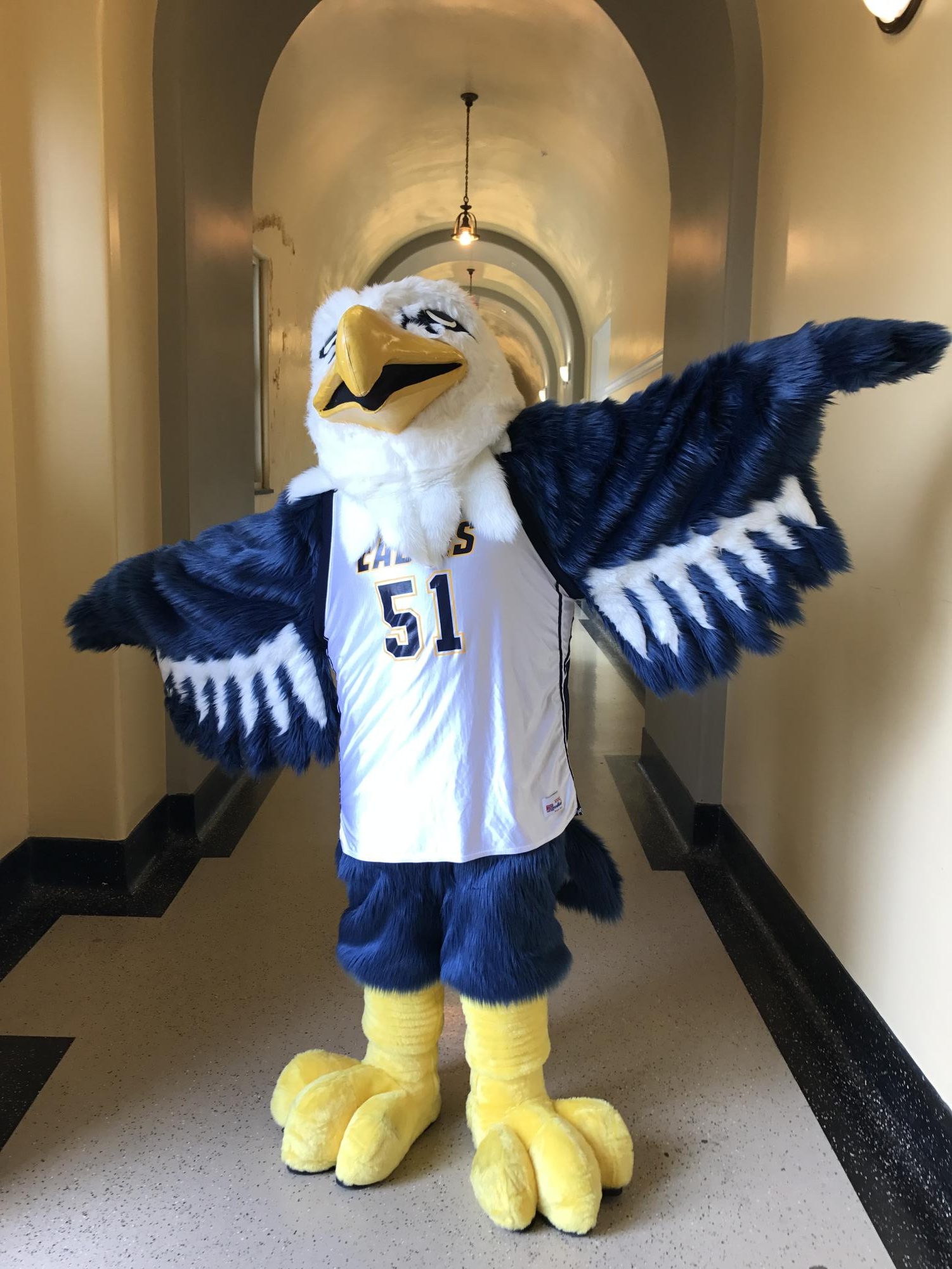“Everybody do the Eagle Rumble; everybody do the Eagle Rumble, Eagle RUMBLE.”
This phrase is a staple at every sporting event. This chant can often be heard from the bellows of a certain notorious and fuzzy superstar: the Eagle mascot.
But who, exactly, is this icon of WHHS athletics?
The Eagle mascot holds a role of significance in hyping the student body, mainly at Friday night football games. The mascot is not a set job, so anyone can volunteer, allowing every student to get a chance to showcase t
heir enthusiasm. One regular in the costume is Emmett Corby, ‘26, who often can be seen flapping his wings at women’s volleyball games.
“I did it just because I like repping in the school spirit, and it seemed like a fun way to do a side mission and just do some random crap,” Corby said.
Corby is a player on the men’s volleyball team and first heard about the mascot position from a friend on the women’s volleyball team.
“I would say the first time I did it, nobody knew who I was,” Corby said. “That was actually very nice because I could kind of get a little wild in the mascot, and then people were like, ‘Who is this kid?’ And the next time I did it, people were like, ‘This is Emmett.’”
The mascot suit fully covers the person inside, allowing them to express themselves freely without fear of being recognized. This encourages the Eagle to perform more daring acts with less hesitation.
“I wouldn’t be flapping my wings and acting like an idiot if I was outside the mascot suit,” Corby said. “It definitely is nice to be in because I can do whatever I want and be wild and it’s fun. It’s very embarrassing but I do it anyway, because who else is going to do it?”
Although Corby has found the role of mascot to be fun, he has experienced one drawback: the lingering smell that comes from the dozens of clammy bodies cohabiting the costume.
“Those mascot suits get really sweaty and smelly,” Corby said. “You gotta get some Febreeze; it smells awful, so you gotta freshen it up. When I’m trying to interact with the people in the stands, they’re always like, ‘Go away,’ because it smells so bad. I get it because I’m smelling it too, but it’s tough.”
However, one benefit that comes with being the mascot is the ability to be a positive example for younger children.
“A lot of people come up to you with little kids and they [ask], ‘Can we take a picture?’ and it’s fun [because] I get to be like a role model while they support their brother or whoever is on the team,” Jackson Baur, ‘25, Nuthouse leader and another frequenter of the suit, said.
As an ambassador of school spirit, at games, the mascot is responsible for hyping up the crowd and getting everyone excited. This is achieved by calling out various cheers, such as the ever-popular Eagle Rumble, and leading chants for people to join in. However, being tasked with elevating the atmosphere of an entire arena is no small feat.
“That’s definitely the challenge; I [have to] keep the energy up even though nobody is really cheering; sometimes we’re down by a lot of points,” Corby said. “You just have to act like we’re still in it; it’s tough.”
While the varsity football team has not had the easiest season, fans continue to pack the stands each week to cheer on their fellow Eagles. Among these optimistic faces is the mascot, there to uplift the crowd, even in times of defeat.
“We show up knowing we’re [going to] lose for most of the games, so we show up and try to have a fun time,” Baur said. “I think if we can win the student section more than it feels like for us at least we’ve won the game. Especially since a lot of people come to Walnut games because they know they’re [going to] beat us.”
The mascot not only plays a key role in engaging spectators but also boosting the spirit of students participating in the event, such as players and cheerleaders.
“It hypes up the student section and the cheerleaders as well,” Taylor Birl, ‘25, co-captain of the varsity cheer team, said. “It makes me happy. It makes me try harder.”
Additionally, the mascot gives students something to laugh at, which is especially vital since loss is a common occurrence.
“The mascot really raises spirit,” Eleanor Jackson, ‘27, a WHHS athletic enthusiast, said. “It’s really funny whenever he does anything. If the mascot’s running around, that’s funny. If the mascot has a cape on, that’s funny. Especially if the mascot’s dressed up in the theme.”
The anticipated presence of the mascot at games adds to the excitement and gives attendees something to look forward to, even when suffering a crushing defeat.
“I feel like in close games or games that I know a lot of people are going to be at, having the mascot raises the crowd level even more because we are already a pretty hype student section,” Baur said. “If we aren’t winning any games, we can at least win the student section battle, so [I] try to get the crowd more hyped, which I think the mascot accomplishes.”





